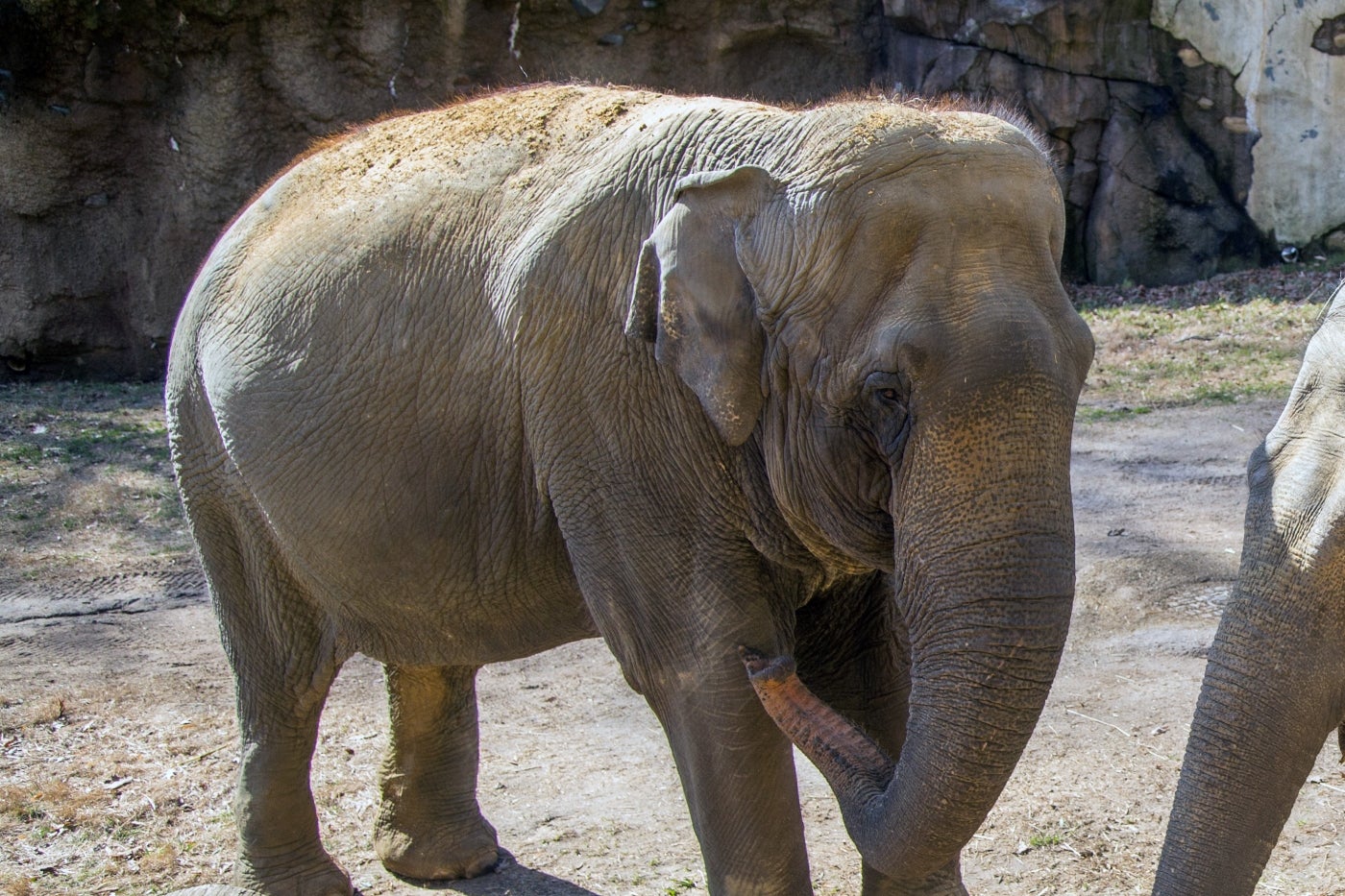Elephant Update: Treating Shanthi’s Arthritis
Animal keepers at the Smithsonian’s National Zoo describe Asian elephant Shanthi as smart, loyal and steadfast. At 44 years of age, she is also considered an older elephant by Association of Zoos and Aquariums standards.
Like many aging animals, Shanthi has osteoarthritis, a degenerative disease affecting joint cartilage and the underlying bone with associated pain and stiffness. She was first diagnosed with the chronic condition in her carpi (wrists) when she was in her teens, and Zoo keepers and veterinarians have spent decades successfully managing her disease with multi-modal therapies. While arthritis does not have a cure, animal care staff continue to implement innovative ways to control Shanthi’s condition, ease her discomfort and improve her overall quality of life.

In March 2016, Zoo veterinarians collaborated with an equine veterinarian, Dr. Paul Anikis, to decrease the pain and inflammation in Shanthi’s joints using an innovative therapy called Interleukin-1 Receptor Antagonist Protein (IRAP), which has successfully slowed the progression of osteoarthritis for horses and people.
In preparation for these procedures, Shanthi’s blood was collected and then centrifuged, separating the blood cells from the plasma, which naturally contains the IRAP. The plasma was then frozen to negative 80 degrees Celsius, thawed and injected into Shanthi’s wrists. At the same time, Legend—a hyaluronic acid medication—was administered intravenously to aid in joint lubrication and decrease inflammatory markers within the joint. During Shanthi’s initial treatment, she received a series of IRAP injections in each forelimb. At that time, she underwent three separate procedures for each limb.
Initially, the IRAP therapy successfully blocked the inflammation—keepers noticed that Shanthi was moving about her exhibit more overall, and Zoo veterinarians noted that the inflammatory markers that they evaluated in her blood and joint fluid showed improvement as well.
Prior to Shanthi’s case, joint fluid prostaglandins and serum cytokine and interleukin inflammatory markers had not been previously used to monitor and assess osteoarthritis in elephants at the Smithsonian’s National Zoo or elsewhere.
It can take four-to-eight weeks after administration for staff to see the benefits of the procedure. Then, five-to-seven months after treatment, those benefits would begin to wear off. Animal keepers and Zoo veterinarians closely monitored Shanthi’s behavior, mobility and medical parameters; when they indicated the discomfort had returned, additional rounds of IRAP therapy were administered, roughly every five-to-eight months. To date, she has received 14 treatments—seven in each wrist.
Following Shanthi’s last IRAP procedure Sept. 11, 2018, animal care staff noticed that she was not responding as favorably as she had with previous treatments. Shanthi would shift her weight disproportionately from one front leg to the other while standing, and she would take shorter, stunted steps when she walked. Her reaction to these movements was a sharp one—an obvious sign of discomfort.